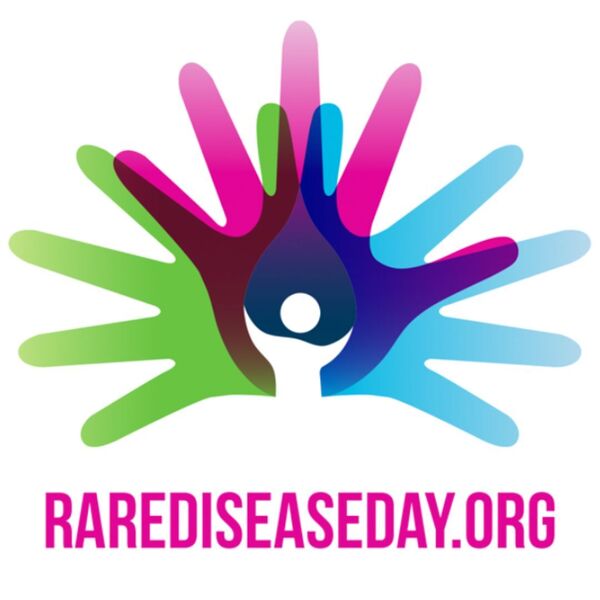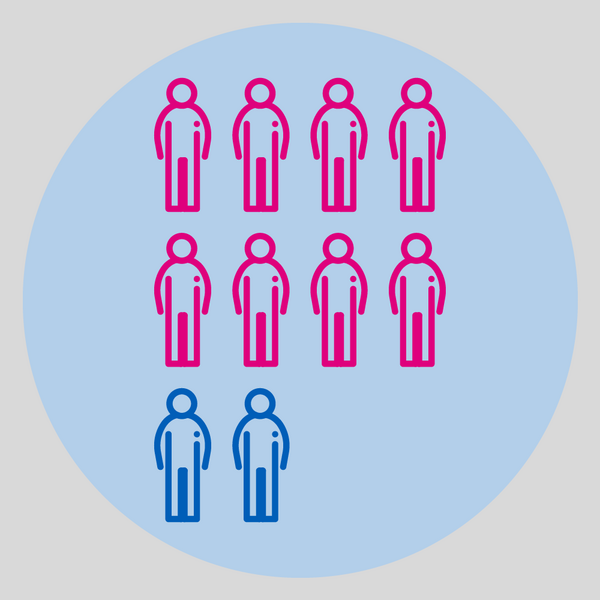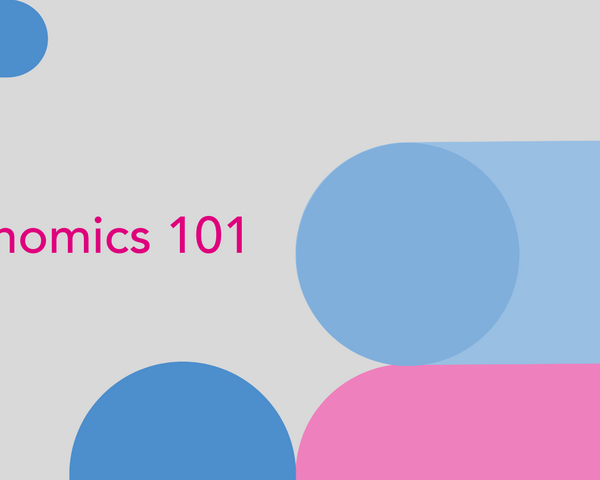Genomics 101: What is a rare condition?
By Florence Cornish onIn this series, ‘Genomics 101’, we go back to basics and explore some of the most important topics in genomics. In this blog, we explain what we mean by ‘rare conditions’, how they are caused, and what we can do to treat them.
What is a rare condition?
A condition is classed as ‘rare’ if it affects less than 1 in 2,000 people in the general population.
This is the definition used in Europe, although different parts of the world may use a slightly different number.
How many people have rare conditions?
Around 1 in 17 people are affected by a rare condition at some point in their life. That’s the equivalent to 5300 people in a full Wembley stadium, the largest sports venue in the UK.
Around 300 million people worldwide live with a rare condition every day, with over half of the newly discovered cases occurring in children.
What are examples of rare conditions?
There are estimated to be more than 7000 rare conditions, however, we are constantly learning more about them, so this number keeps on changing.
Whilst some rare conditions are more common than others, some better-known examples include Huntington’s disease, cystic fibrosis, and various childhood cancers.

What is Rare Disease Day?
Rare Disease Day is the official international awareness-raising campaign for rare conditions.
It occurs once a year on the last day of February, with the primary goal being to raise awareness about rare conditions, and the influence they have on families living with them.
Learn more information about Rare Disease Day.
So, why do we say rare condition instead of rare disease?
When talking about our health, the language we use has a big impact.
The Participant Panel at Genomics England is made up of people with lived experience of rare conditions or cancer, or their carers. They recommend using the term ‘condition’ instead of ‘disease’, as people often associate diseases with being infectious.
But, is ‘disease’ scientifically accurate?
Saying ‘rare disease’ instead of ‘rare condition’ is technically accurate, hence Rare Disease Day.
However, it is important to remember that the same term can cause different reactions in different people.
Language is always evolving, and refreshing our understanding of what is and isn’t appropriate is a vital part of supporting those affected by rare conditions.
To read more about language in healthcare and genomics, find the Language and terminology guide developed by the Participant Panel.
So then, what causes rare conditions?
The underlying causes of rare conditions can be broadly grouped into ‘genetic’ and ‘environmental’.
Can you explain a genetic cause?
A genetic cause is when a glitch in a person’s genetic code gives rise to a rare condition.
Our complete genetic code, called the genome, acts as an instruction manual for us to survive, function and grow. When there are glitches in this instruction manual, it can cause problems for our health.
These glitches can be passed from parent to child, or they can occur by chance as the foetus develops during pregnancy.
And what about environmental causes?
An environmental cause is when a non-genetic factor, such as a viral infection, leads to a rare condition.
However, it is not always clear cut whether causes are genetic or environmental, and some conditions can be caused by a combination of both.
An everyday example of this is people’s heights. The height that someone grows to depends largely on their genetics, but it also depends on external factors, such as nutrition in their childhood.

We expect 8/10 people with rare conditions to have a genetic component to their condition
So, are all rare conditions genetic?
In short, no. Not all rare conditions are genetic.
Whilst the majority of rare conditions do have a genetic component (around 80%), this is not always the case.
If 10 people with different rare conditions were together in a room, we’d expect 8 of them to have a genetic component to their condition.
When we talk about genetic causes, these are very varied. They range from very small glitches in our genetic code, to an entire extra chromosome that contains hundreds of extra genes.
Understanding genetic causes can give us useful clues when developing therapies that could help people with rare conditions.
If rare conditions are so varied, why do we group them together?
Good question! One reason for grouping rare conditions together is to highlight some of the challenges faced by those affected.
This includes delays in getting a diagnosis, increased chance of misdiagnosis, or not receiving a diagnosis at all.
Furthermore, 95% of rare conditions still don’t have a specific treatment.
Rare conditions can also have a significant emotional and social impact, explained by the Hidden Cost of Rare Disease Project by Genetic Alliance UK.
It's important to bring together different voices as we address the common challenges of having a rare condition.
Individualised medicine for treating rare conditions
Individualised medicine is an approach that uses genetic or environmental information about a patient in order to tailor their therapy to what will work best for them.
The goal is to create a treatment precisely designed for each individual according to their specific circumstances.
This enables a more effective treatment for the patient, ultimately leading to a better outcome.
Is individualised therapy used already?
Individualised therapy is still in its early stages and not yet widely available. However, it offers great potential as an effective treatment for people with rare conditions, now and in the future.
Julia Vitarello is the founder of Mila’s Miracle Foundation and the N=1 Collaborative. Her daughter Mila was the first person in the world to receive an individualised therapy.
At age 6, Mila was diagnosed with a fatal, rare condition called Batten disease. Julia set up the charity Mila’s Miracle Foundation, which initiated the study to drive and fund the creation of Mila’s drug ‘Milasen’.
We're living in an incredible time where science is no longer the limiting factor. We now have the technology to find the underlying genetic cause of disease and rapidly develop a medicine to target it, even if unique to just one person”.
Julia Vitarello
Founder of Mila's Miracle Foundation and the N=1 Collaborative
The Rare Therapies Launch Pad
In November 2023, the government announced its support for the Rare Therapies Launch Pad. This new programme will develop a pathway for children with rare conditions to access individualised therapies.
The first project in the programme will explore a type of individualised therapy known as antisense oligonucleotides (ASOs), to treat children with ultra-rare and life-threatening brain conditions.
ASOs are short DNA-like molecules that target messenger molecules in the body, blocking harmful genes from being expressed.
The Launch Pad pathway will include diagnosis, design and rapid manufacture of individualised therapies, and treatment. It also aims to provide evidence that individualised therapies are worth continuing to explore beyond the pilot study.
Longer term, this programme aims to develop an approach for delivering individualised therapies across a wide range of are conditions.
Find out more about the Rare Therapies Launch pad in our news article.
Prefer to listen? Catch the podcast ‘What are rare conditions?’. To learn about other important topics in genomics, check out the other Genomics 101 blogs in the series.

